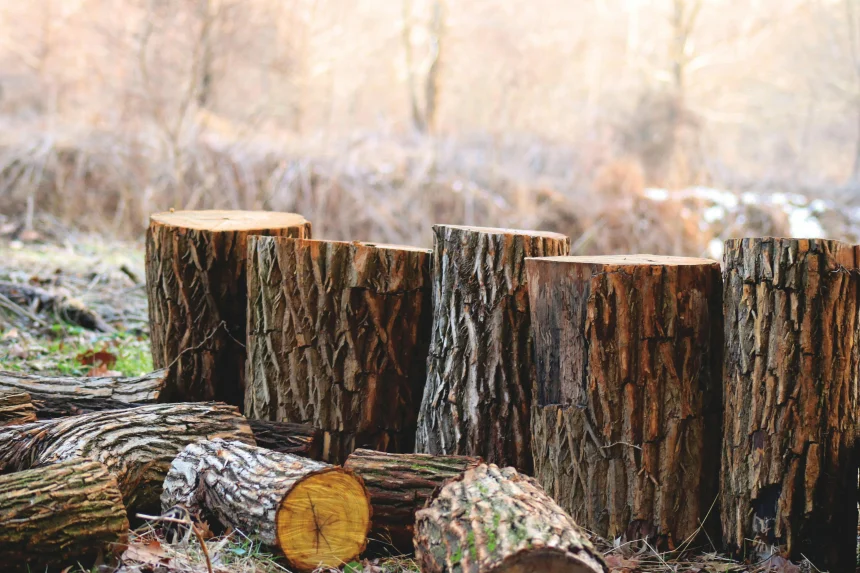Introduction
In the ever-evolving world of construction, the materials used significantly impact the quality, durability, and aesthetic appeal of a project. Among the variety of materials available, wooden planks have gained considerable attention, particularly with the emergence of Plangud. This article delves into the concept of Plangud wooden planks, examining their features, benefits, applications, and how they are changing the landscape of modern construction.
What Are Plangud Wooden Planks?
Plangud wooden planks are high-quality wooden boards crafted specifically for construction and design purposes. They are renowned for their durability, aesthetic appeal, and eco-friendliness. Plangud places a strong emphasis on the use of sustainably sourced timber, ensuring that the wood used in their products is harvested from responsibly managed forests. This commitment to sustainability not only benefits the environment but also enhances the overall quality of the planks.
Key Features of Plangud Wooden Planks
Plangud wooden planks boast several features that make them an ideal choice for various construction applications:
- Sustainability: Plangud prioritizes environmentally friendly practices by sourcing wood from certified forests, which promotes responsible logging and forest management.
- Durability: These planks are designed to withstand a variety of weather conditions, ensuring long-lasting performance in both indoor and outdoor settings.
- Aesthetic Appeal: The natural grains and colors of the wood contribute to a unique charm, enhancing the visual appeal of any construction project.
- Versatility: Plangud wooden planks can be used in various applications, including flooring, wall paneling, furniture, and decorative elements.
Benefits of Using Plangud Wooden Planks
1. Eco-Friendly Choice
One of the most significant advantages of using Plangud wooden planks is their eco-friendliness. By opting for sustainably sourced timber, builders and homeowners can reduce their carbon footprint and contribute to environmental conservation. This is increasingly important as consumers seek products that align with their values regarding sustainability.
2. Cost-Effective
Plangud wooden planks present a cost-effective solution for diverse construction needs. While they may have a higher upfront cost compared to synthetic materials, their durability and longevity lead to lower maintenance costs over time. Investing in quality materials like Plangud can save money in the long run due to their resilience and reduced need for repairs.
3. Enhanced Aesthetic Value
The natural beauty of wood significantly enhances the visual appeal of any space. Whether utilized in residential or commercial projects, Plangud wooden planks provide warmth and elegance. They can easily complement various design styles, from rustic to modern, making them a versatile choice for architects and designers.
4. Easy to Work With
Plangud wooden planks are user-friendly, making them easy to cut, shape, and install. This ease of use simplifies the construction process, saving time and labor costs. For DIY enthusiasts and professional builders alike, the simplicity of working with Plangud wooden planks can lead to more efficient project completion.
5. Health Benefits
Using Plangud wooden planks can also contribute to a healthier indoor environment. Wood has natural properties that can help regulate humidity and improve air quality. This makes wooden materials an excellent choice for creating comfortable living and working spaces.
Applications of Plangud Wooden Planks
These wooden planks find applications across various domains, showcasing their versatility and adaptability:
- Residential Construction: These wooden planks are widely used for flooring, decking, and wall paneling. Their natural beauty adds a warm and inviting atmosphere to homes, making them popular among homeowners and builders.
- Commercial Projects: In offices, retail spaces, and restaurants, Plangud planks enhance the interior design while providing durability. Their aesthetic appeal can help create a welcoming atmosphere for customers and clients.
- Furniture Making: The versatility of Plangud wooden planks makes them ideal for crafting high-quality furniture. From dining tables to bookshelves, these planks can be used in various furniture applications.
- Outdoor Structures: Plangud wooden planks can withstand the elements, making them suitable for outdoor decking, landscaping, and garden furniture. Their durability ensures they can endure exposure to sunlight, rain, and varying temperatures.
How to Choose the Right Plangud Wooden Planks
Selecting the right wooden planks for your project involves considering several factors to ensure you make an informed choice:
1. Wood Type
Different wood species offer varying characteristics, affecting the performance and appearance of the planks. Some common types of wood used in Plangud products include:
- Oak: Known for its strength and durability, oak is a popular choice for flooring and furniture.
- Maple: This hardwood is appreciated for its fine grain and light color, making it ideal for modern designs.
- Pine: A more affordable option, pine is lightweight and easy to work with, making it suitable for various applications.
2. Thickness and Size
Consider the thickness and dimensions of the planks based on your project needs. Thicker planks provide more durability and stability, while thinner ones are easier to handle and install. It is essential to choose the right thickness based on the intended use.
3. Treatment and Finish
Decide on the type of treatment and finish you want for your wooden planks. Treated planks can resist moisture, pests, and rot, while different finishes enhance the aesthetic appeal. Common treatments and finishes include:
- Staining: Enhances the natural color and grain of the wood.
- Sealing: Protects the wood from moisture and damage.
- Painting: Allows for customization and matching with interior decor.
4. Sustainability Certification
Ensure that the wooden planks you choose come from certified sources. Look for labels such as FSC (Forest Stewardship Council) or PEFC (Programme for the Endorsement of Forest Certification) to confirm that the wood is sourced responsibly. These certifications ensure that the wood is harvested in a manner that protects forest ecosystems.
Maintenance Tips for Plangud Wooden Planks
Proper maintenance is crucial for ensuring the longevity and appearance of Plangud wooden planks. Here are some simple tips to keep your wooden planks in excellent condition:
- Regular Cleaning: Dust and clean the surface regularly using a soft broom or vacuum cleaner to prevent dirt buildup. For deeper cleaning, use a damp cloth and a mild wood cleaner.
- Avoid Excess Moisture: Use mats in areas prone to spills, such as kitchens and entryways, to protect the wood from moisture damage. Ensure that the indoor humidity is kept at a comfortable level.
- Use Protective Finishes: Apply sealants and finishes to enhance durability and protect against scratches. Reapply finishes as needed to maintain the wood’s appearance and integrity.
- Inspect Regularly: Periodically check for signs of damage, such as scratches, dents, or water stains. Addressing minor issues promptly can prevent more significant damage over time.
Maintenance Schedule
To maintain the quality of Plangud wooden planks, consider the following maintenance schedule:
| Task | Frequency | Details |
| Dusting | Weekly | Use a soft cloth or vacuum cleaner. |
| Deep Cleaning | Monthly | Use a damp cloth and wood cleaner. |
| Inspect for Damage | Quarterly | Check for scratches, dents, and water damage. |
| Reapply Finish | Annually or as needed | Apply sealants or finishes to protect the wood. |
Comparing Plangud Wooden Planks to Other Materials
When considering materials for construction, it’s important to compare Plangud wooden planks with other commonly used materials. Here’s a brief comparison:
Plangud Wooden Planks vs. Composite Materials
| Feature | Plangud Wooden Planks | Composite Materials |
| Sustainability | Eco-friendly, sustainably sourced | Often made from recycled materials, but may include plastic |
| Durability | Long-lasting with proper care | Generally durable but may degrade over time |
| Aesthetic Appeal | Natural wood appearance | Can mimic wood but lacks authentic grain |
| Maintenance | Requires regular care | Typically low maintenance, but may not look as good over time |
Plangud Wooden Planks vs. Vinyl Flooring
| Feature | Plangud Wooden Planks | Vinyl Flooring |
| Sustainability | Eco-friendly, sustainably sourced | Generally not eco-friendly |
| Comfort | Warm and natural feel | Can feel cold and hard |
| Installation | Relatively easy | Easy, with various options available |
| Durability | Highly durable | Durable but may scratch easily |
The Future of Plangud Wooden Planks
As the demand for eco-friendly and sustainable construction materials continues to grow, Plangud wooden planks are poised to play a significant role in shaping the future of building and design. Here are some trends that may influence the future of Plangud:</span>
1. Increased Demand for Sustainability
With more consumers prioritizing sustainability, the demand for Plangud wooden planks is expected to rise. Builders and architects will likely seek eco-friendly materials that align with green building practices.
2. Innovative Treatments and Finishes
Advancements in wood treatment and finishing techniques will enhance the durability and aesthetic appeal of Plangud wooden planks. These innovations may include environmentally friendly sealants and finishes that provide greater protection against moisture and wear.
3. Integration with Technology
The integration of technology in construction may lead to innovative uses for Plangud wooden planks. Smart homes and buildings that utilize sustainable materials will likely gain traction, promoting the use of Plangud in modern designs.
4. Collaboration with Designers and Architects
As more designers recognize the benefits of using Plangud wooden planks, collaborations between Plangud and architectural firms may lead to unique and stunning projects. These partnerships can highlight the versatility and beauty of wooden planks in modern architecture.
Conclusion
These wooden planks represent a shift towards sustainable and aesthetically pleasing materials in the construction industry. With their numerous benefits, including eco-friendliness, durability, and versatility, Plangud wooden planks are an excellent choice for various applications. As the demand for sustainable building materials continues to grow, Plangud is well-positioned to play a vital role in shaping the future of construction. By choosing Plangud wooden planks, builders and homeowners alike can contribute to a greener future while enhancing the beauty of their spaces.
FAQs
What are Plangud wooden planks made from?
These wooden planks are made from sustainably sourced timber, including species such as oak, maple, and pine. These materials are chosen for their durability and aesthetic appeal.
How do I maintain Plangud wooden planks?
To maintain these wooden planks, regularly dust and clean them with a damp cloth. Avoid excessive moisture and apply protective finishes as needed. Inspect the planks quarterly for any signs of damage.
Are Plangud wooden planks environmentally friendly?
Yes, these wooden planks are environmentally friendly. They are sourced from certified forests, promoting responsible logging and sustainability practices that help protect forest ecosystems.
Can Plangud wooden planks be used outdoors?
Absolutely! These wooden planks are designed to withstand outdoor conditions, making them suitable for decking, garden furniture, and other outdoor structures.
What are the benefits of using Plangud wooden planks over synthetic materials?
These wooden planks offer several advantages over synthetic materials, including a natural aesthetic, better durability, and eco-friendliness. They also contribute to healthier indoor environments by regulating humidity.
Where can I purchase Plangud wooden planks?
These wooden planks can be purchased from various building supply stores, specialty lumberyards, and online retailers that focus on sustainable building materials. Always ensure you are buying from a reputable source that prioritizes sustainability.





